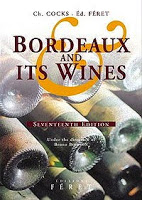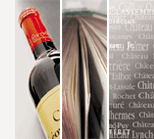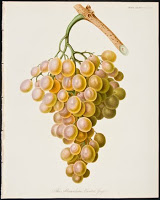The original plates used to illustrate various 19th century editions of the renowned Cocks & Féret Bord eaux et Ses Vins guide go on sale in Paris later this month.
eaux et Ses Vins guide go on sale in Paris later this month.
The set of 588 copper plates will be auctioned by Artcurial in Paris on 18 December. Cocks & Féret’s guide is often referred to as ‘the Bible of Bordeaux’ and is considered to be the most comprehensive volume on Bordeaux and its vineyards.
The individual copper plates, made between 1850 and 1908, have pre-sale estimates of €150-2500. The whole collection is expected to fetch €300,000.
Laurie Matheson from auctioneers Artcurial, told decanter.com that initial interest “has been huge. The Féret guides revealed the past glory of Bordeaux. We’re selling the memoirs of Bordeaux. ‘We’re expecting all sorts of bidders – from people who own castles, and historians, to wine producers and collectors. It’s French viticultural history.”

Bordeaux et Ses Vins was created by Charles Cocks and Michel-Édouard Féret in 1846, which was published under the name Bordeaux, its Wines and the Claret Country. It was translated into French in 1850 and published as the first edition of Bordeaux et Ses Vins.
It is regarded as the classic reference work on Bordeaux wines, and is to date considered the most comprehensive information source on Bordeaux wineries.
Jean-Baptiste Féret founded the publishing house La Librairie Féret in Bordeaux in 1812, which became Féret et fils in 1841. In 1846 Michel-Édouard Féret approached Charles Cocks, an English schoolmaster and wine enthusiast living in Bordeaux since 1840, to publish a directory of wine aimed at his compatriots.

Charles Cocks died in 1854, while the second edition, Bordeaux et Ses Vins 2ème édition, appeared in 1868, and the succession of publications provide a useful historical record of the evolution of different properties’ and districts’ reputations.
Revisions are published to date, usually referred to as “Le Féret”, most recently with the 2007 edition of Bordeaux et ses Vins 18ème édition. The publishing house has a wonderful array of titles and can be found at www.editions-feret.fr.
The 1846 edition is dedicated to Monsieur le Comte T Ductatel, Minister of the Interior and owner of Chateau Lagrange in Saint Julien.
It is stuffed with interesting information and has chapters on the best species of vines (red and white) to grow in Bordeau x, the wine making process and the best vineyards in Bordeaux – often with snippets on the small properties and villages.
x, the wine making process and the best vineyards in Bordeaux – often with snippets on the small properties and villages.
I find it fascinating when reading the descriptions of the wines from regions back then and being able to compare them to those of today . . .
“Saint Estephe produces a great quantity of good wines of a flavour somewhat different from that of the produce from other good communes: they are light, agreeable, flavoury, highly perfumed and may be bottled at the end of three or four years.”
T he list of recommended grape varieties includes some that I have never heard of and others that are charming synonyms of grapes that are allowed in the blend for Bordeaux today. Pied de Perdix (partridge’s foot) for example is none other than Malbec and Carmenet is actually Cabernet Franc.
he list of recommended grape varieties includes some that I have never heard of and others that are charming synonyms of grapes that are allowed in the blend for Bordeaux today. Pied de Perdix (partridge’s foot) for example is none other than Malbec and Carmenet is actually Cabernet Franc.
However I have never heard of the Cioutat grape which according to Cocks & Féret is a grape that is remarkable only in respect of its parsley shaped leaves.
Cocks & Féret also produced a classification of Bordeaux wine nearly a decade before the Classification of 1855, assessing Châteaux Lafite, Latour, Margaux and Haut-Brion as First Growths.
The Second Growths were Chateaux Mouton, Léoville (present day Léoville-Las Cases, Léoville-Poyferré and Léoville Barton) Rauzan (present day Rauzan-Ségla and Rauzan-Gassies), Durfort, Gruaud-Larose, Lascombes and Gorse (present day Brane-Cantenac). It does not seem that much has changed in over 150 years!

